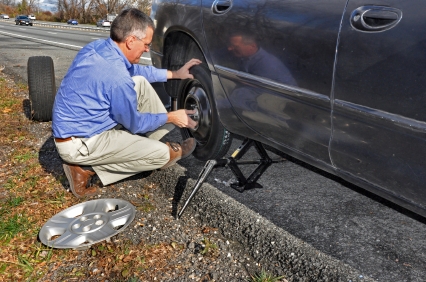by Rich Ellis
 What is a serpentine belt and what does it do?
What is a serpentine belt and what does it do?
Your vehicle’s serpentine belt is one long, winding belt that snakes around several pulleys and is usually visible at the front or on the side of the engine. In most modern vehicles, it drives the air conditioning, power steering, water pump, and alternator – charging the battery and providing additional electrical power. On older vehicles, these various components are often powered by multiple belts. Proper tension is key to a serpentine belt’s performance, and on most vehicles an automatic tensioner adjusts that tension as the belt stretches due to wear, or stretches and contracts with changing temperatures.
How long should a serpentine belt last?
Rubber is the primary ingredient in a serpentine belt, and while the science and manufacturing technology have steadily improved over the years and resulted in longer-lasting, more durable rubber, these belts are still considered a maintenance item and need to be replaced periodically. Exposure to the atmosphere and environmental factors, extreme under-hood heat, and contamination from oil and coolant all contribute to the serpentine belt’s gradual wear. On average, serpentine belts should last between 60,000 and 100,000 miles. However, if you’re only putting a few thousand miles annually on your vehicle, don’t use that mileage interval as the sole guide for when to replace the serpentine belt. Even when it’s not in use, the serpentine belt is still exposed to the atmosphere and is degrading. For vehicles driven less than 10,000 miles annually, consider replacing the belt every four to six years.
What happens if a serpentine belt fails?
You definitely don’t want to wait until the serpentine belt fails to replace it, because doing so will leave you stranded on the side of the road or in a driveway or parking lot. Because the belt powers – on most vehicles – the water pump and alternator, the vehicle won’t operate for very long or at all when the belt fails, not to mention that trying to drive even after the belt fails risks causing further damage to the engine and components.
What are the signs of a failing serpentine belt?
The best strategy to gauge wear is to have the serpentine belt inspected for damage and for proper tensioning at every oil change, and to follow the recommend mileage or time intervals for belt replacement. A failing or improperly tensioned serpentine belt usually exhibits some warning signs prior to complete failure, including:
- The air conditioning system doesn’t work properly
- Power steering is sluggish or isn’t functioning at all
- The battery isn’t charging properly, or a battery or alternator warning is illuminated
- Vehicle overheats
- Belt squeals or makes other noises
- Belt is shiny, frayed, has chunks of rubber missing, or has cracks between the belt teeth
What else should be replaced when installing a new serpentine belt?
As mentioned previously, proper tension is key to a serpentine belt’s performance, and a spring-loaded or hydraulic automatic belt tensioner maintains that tension. This belt tensioner should be inspected along with the serpentine belt, and considered for service or replacement at the same time. On vehicles with a manual belt tensioner, the tension should be adjusted as needed.
Are there other belts that need to be replaced?
Some vehicles – particularly older ones – may have two or three belts powering various components. These rubber belts all need to be inspected and replaced in a manner similar to how the serpentine belt is treated. Additionally, internal combustion engines have a timing belt or chain that plays a critically important role in engine function. On most vehicles with a rubber timing belt, the belt isn’t visible for inspection but it does need to be replaced every 100,000 miles, or at an interval based on vehicle manufacturer recommendations.


